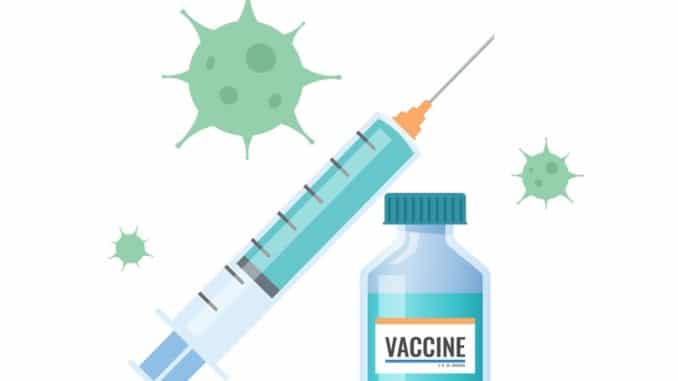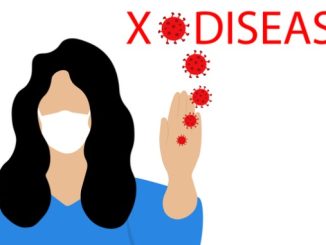
The vaccine roll out has been full steam-ahead, but how effective has it been in real terms?
CREDIT: This is an edited version of an article that originally appeared on The BMJ
In its human host, the spread of SARS-CoV-2 has followed unusually volatile – and seemingly unpredictable – patterns that are often driven by statistical extremes, such as superspreading events. These drivers of infection range from household, through local, to community events and beyond, in which multiple chains of infection coalesce into the regional and highly volatile epidemic waves that characterise this pandemic.
Fluctuating in both space and time, such waves are difficult to predict, and occur largely independent of past SARS-CoV-2 incidence or incidence in neighbouring regions. Thus, little more than a year after the pandemic began, many regional outbreaks have rapidly generated a broad spectrum of complex genetic variants, including variants of concern, that have already begun to obstruct our view of the pandemic’s past – including attempts to unambiguously pinpoint its origin.
In addition, these unpredictable patterns of transmission make the development, implementation, and retrospective evaluation of essential public health interventions, such as vaccination, a particular challenge, because observed short-term effects can be strongly biased by random fluctuations in incidence.
In this rapidly changing environment, mass vaccination has emerged internationally as a constant and leading initiative against COVID-19. In a paper (13 May 2021), Lopez Bernal and colleagues report evidence of vaccine effectiveness from England’s first COVID-19 mass vaccination campaign. Vaccination began on 8 December 2020 and, for the first time, nucleic acid-based vaccine candidates were administered to the UK population – Pfizer’s messenger RNA-based BNT162b2 and Oxford-AstraZeneca’s adenoviral DNA based ChAdOx1-S. Pfizer’s vaccine alone was administered until 4 January 2021, at which point, both vaccines were used.
Clinical trials
Vaccine effectiveness which, during recent clinical trials, measured the reduction in incidence of cases among vaccinated people relative to unvaccinated controls, was here estimated against three different outcomes in adults older than 70 years:
- symptomatic SARS-CoV-2 infections confirmed with standard polymerase chain-reaction testing;
- admissions to hospital; and
- deaths.
Outcomes were monitored after a first dose (BNT162b2 and ChAdOx1-S) and second dose (only BNT162b2).
During the study period between 8 December 2020 and 19 February 2021, the variant of concern VOC 202012/01 (also referred to as B.1.1.7) became dominant in the UK. After encouraging results from phase III clinical trials, Lopez Bernal and colleagues’ data provide much needed, real-world, evidence of vaccine effectiveness against a novel – and now common – variant of concern. Indeed, their results indicate significant protection from both vaccine candidates against symptomatic SARS-CoV-2 infection, admissions to hospital, and death – with effectiveness levels near those already seen in clinical trials, or in similar observational reports from other countries.
For adults aged 70 years and older, the authors report vaccine effectiveness of 61% (95% confidence interval 51% to 69%) for BNT162b2, and 60% (41% to 73%) for ChAdOx1-S from 28 days after the first dose. This close similarity in effectiveness is somewhat unexpected, since both vaccines encode structurally distinct antigens; BNT162b2 includes a double proline modification that structurally stabilises the spike antigen and favours a stronger immune response, whereas ChAdOx1-S does not.
Without this stabilisation, the spike protein alone may cause cellular abnormalities such as the formation of syncytia (fusion of cells), so an increase in pharmacovigilance might be indicated for ChAdOx1-S.
More attention merited?
The increased odds of a positive test result within 20 days of an initial dose of Pfizer’s vaccine among adults aged 80 years and older should, perhaps, also attract more attention.
The authors suggest that this increased risk was probably due to the selection of high-risk individuals for vaccination during the campaign’s earliest stages; if so, the effect size would be expected to decrease steadily with time – but, instead, the odds ratio for a positive test result first increased to a peak of 1.47 (95% confidence interval 1.23 to 1.76) after nine days, and then decreased back to baseline (odds ratio 1.00) before 21 days post-vaccination. This pattern remains unexplained.
The study has a test negative design, meaning that the authors compared the vaccination status of individuals according to their observed clinical outcomes. For symptomatic SARS-CoV-2 infection, the study’s primary outcome, this comparison is given as odds ratios, which are bias-free if the incidence of concurrent non-SARS-CoV-2 respiratory virus infections is the same in both vaccinated and unvaccinated groups. Such co-infections are not uncommon among people with SARS-CoV-2, and future studies should test more directly whether the above condition is met, and that rates of concurrent viral infections do not depend on vaccination status.
Overall, Lopez Bernal and colleagues’ findings strongly support a protective effect among older adults during the initial stages of the UK’s first COVID-19 vaccination programme. It is, however, important to emphasise that both vaccine types remain vaccine candidates that are still being evaluated for effectiveness and safety during ongoing confirmatory phase IV trials.


Be the first to comment